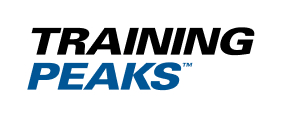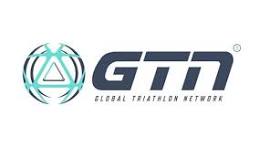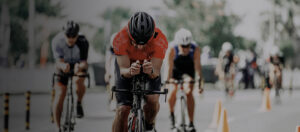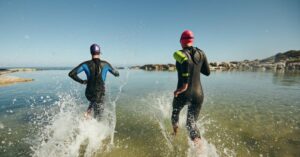Training for a triathlon? Here’s the lowdown on the strength training you should be doing…
You swim, you bike, you run, you eat the right food and, if family, work and your social life allow, you enjoy sufficient recuperating rest, too. So when we say – nay shout – ‘ALL TRIATHLETES SHOULD STRENGTH TRAIN’, you’re well within your rights to reply, ‘Phil, that’s all very well coming from a man whose profession revolves around endurance sport, but how can we possibly find the time for more training?’
That’s why the aim of this feature is to convince you that squeezing in a pared-down strength programme will transform you into a stronger, faster and leaner triathlete. That persuasion begins with banishing a huge misconception – that adding weights and strength work to your programme will lead to you bulking up and slowing down. It won’t.
Yes, bodybuilders are loaded with muscle. They are about ‘the look’. That’s their weight-training aim. Function isn’t a concern. It is in triathlon where the goal’s always to improve your swim, bike and run performance. Triathletes are about improving movements, so there’s a neurological aspect as well as a muscular.
Another muscular difference between you and bodybuilders is that you’re spending hours working your cardiovascular system and building endurance. You burn thousands of calories, meaning it’ll be rare that you actually have a calorie surplus to build huge muscles. Of course, some endurance athletes are more genetically endowed than others to pile on muscle. 2013 Ironman world champion Frederik Van Lierde, for example, confessed he avoided protein shakes and protein bars as consuming too much muscle-repairing-and-rebuilding protein added too much weight. Tellingly, Van Lierde didn’t avoid weights. But why? What are the benefits of weight training for a triathlete?
Triathlon Strength Benefits
Let’s start with delaying the onset of fatigue. How? Sports scientist and one-time professional cycling coach Dan Healey put it best, once telling us, ‘When you weight train, you lay a bed of muscle fibres that helps to soak up lactic acid as the intensity of exercise rises. That can give you up to a 6% increase in threshold for free as opposed to simply endurance training.’
Studies have also shown that weight training can: prevent injury and promote better swim, bike and run form; improve run economy by recruiting the correct muscles for an optimised stride – one study saw a 7% improvement; boost strength and speed; raise your metabolism via anabolic means (much of endurance is catabolic, leading to muscle loss if you don’t eat sufficient protein), leading to a leaner you; and, finally, reduce the effects of ageing. Testosterone levels drop as the years roll by. Weight training redresses this imbalance, highlighting why weights are even more important for an ageing triathlete.
The minutiae of a weight-training programme for triathletes could stretch to its own book. You don’t have that time – as you’ll be weight training! – but there are condensed guidelines that provide a good starting point…
Triathlon Strength: Which Muscles?
With limited time, it’s key that you focus on the main muscle groups engaged in triathlon. When it comes to swimming, we’re talking the latissimus dorsi (lats) and pectoralis (chest). Although clear differences between cycling and running, the quadriceps, hamstrings and glutes (bottom) play key roles in both.
Triathlon Specific Strength Exercises
Always remember: strength training is to improve your triathlon performance, not your Insta hits! That means placing your feet and hands in similar positions to where they might be in either the swim, bike or run. Take the leg press. Place your feet the same width apart as your pedals might be on your bike. Or when doing lat pull-downs. During the swim pull phase, your hand is in line with your shoulder, not 15 inches aside. Remember this when camping the bar.
Time Saving Multi-joint Exercises
Your joints are a neglected part of the physical framework but are put under immense pressure in triathlon, raising the spectre of injury. So engage multi-joint exercises over single-joint efforts to maximise time. Essentially, that’d mean dispensing with an exercise like the bicep curl, which is a linear movement that activates solely the elbow joint, and instead undertaking exercises like the squat that stresses the hip, knee and ankle joints.
Periodise Your Strength Training
The ideal is that you incorporate strength training into your programme for the entire year. Like many of you might already apply to your training and nutrition, it’s beneficial to periodise your year in search of growing different aspects of weight-related fitness conducive to peaking in race season. Two sessions a week is optimum for all phases, which you can look to tick off within 30-45mins.
If weight training’s new to you, we’d recommend starting now with what many call the anatomical adaptation phase. Essentially, this is readying your muscles and tendons for the more intense phase to follow.
Exercises, and order of exercises, might include the squat, lat pull-down, leg press, chest press, seated row and ab work. Although, in our training plans, we provide dynamic exercises that you can perform at home, with minimal equipment.
Three sets of 20 reps on each is a good start with a minute’s rest in-between. Load is around 40-60% of your maximum.
If you already weight train, or once you’ve undertaken the anatomical adaptation phase, it’s time for the core weight phase of the year – the maximal strength phase. This is ostensibly for the off-season and into the pre-season. As the name suggests, this is about strength and generating greater swim, bike and run force. Reps decrease; weights increase.
The same exercises as before are fine but attempt three to five sets of 10-15 reps, select a load that you can’t lift more than 15 times on the first set. Recovery is higher between sets – around 2mins – to maximise strength gains. You can follow this template as race season closes in.
The final phase is the strength maintenance phase. Again, the same exercises are fine, but choose variants – if seeking variety. Drop load to around 60%. Sets should be two to three with a minute’s recovery between, while reps should drop to six to 12. This will maintain strength gains from the previous phase without tearing your muscles too severely for race season.
For all phases, ensure you warm up and cool down with 5 minutes of easy aerobic activity.












